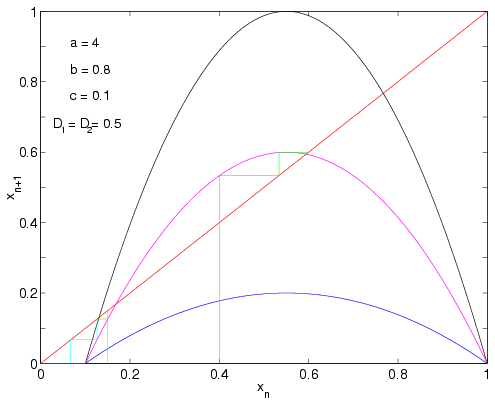
If that was so, even coupling two source habitat maps
(i.e., both having a = 4) would have given us enhanced persistence
?
But that is not true.
Coupling two source habitat maps together with strong coupling synchronizes them rapidly and the combined system effectively reduces to a single source habitat map - with a very low persistence time.
The strong coupling limit (D
= 0.5)
If migration (i.e., risk spreading) was the only factor
enhancing persistence we should see persistence at this limit for all values
of c.
At this limit, it is very easy to see the effect of the coupling - the resultant map of the average population of the two habitats is simply the average of the two individual maps.

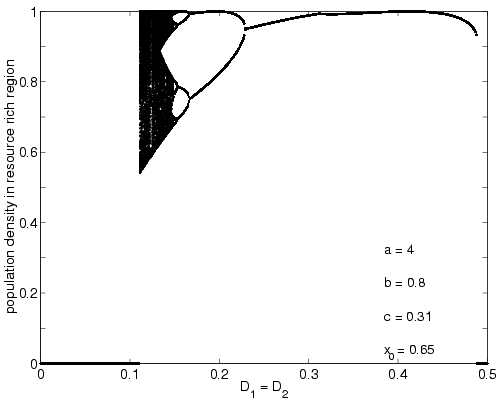

The mechanism: Nonlinearity
The effective map due to the coupling is altered from the unperturbed map - such that it no longer has any region mapping to the trapping region.
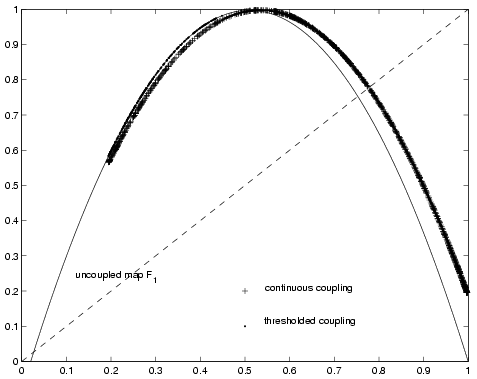
The persistence time is infinite.
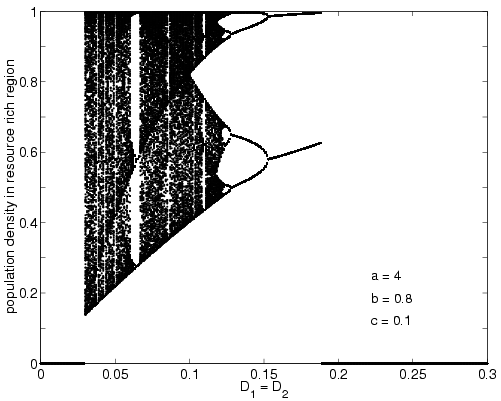
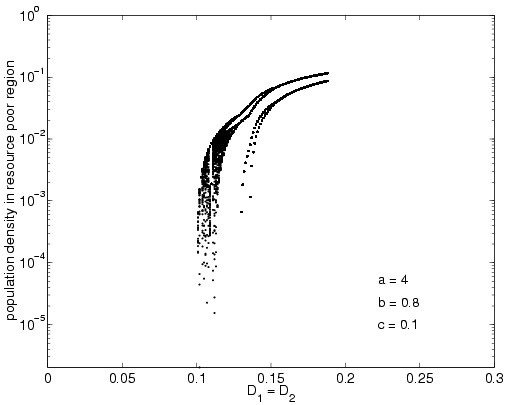
Habitat selection:
More members of a species will prefer staying in the
resource rich region (source) than migrating to a resource poor
region (sink). Migration will occur only when
population pressure has exceeded a threshold.
We model this by switching on the coupling only
when the population size difference between the two habitats exceed
a finite threshold.
No qualitative change in the results;
slight changes in the alteration produced by coupling in the low x
region of the resultant map.